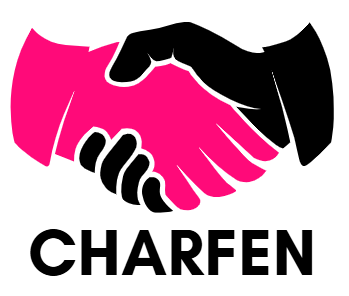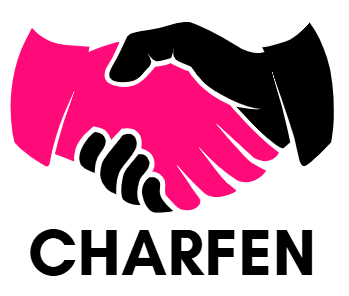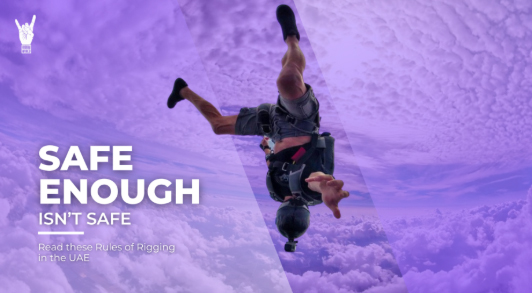The rules of rigging in the UAE go far beyond simply suspending equipment. They are a dense framework of municipal safety codes, venue-specific load restrictions, and international engineering standards that govern every overhead point, truss span, and lifting device in the live events industry. For High and Wired, compliance isn’t optional, it’s the blueprint for every project.
For technical entrepreneurs, this article details a few but significant rules of rigging in the UAE that come in handy. Keep reading to find out!
Rules of Rigging in the UAE: Regulatory Approval & Submission Protocols
Before any truss or flown system is built for any high access work in Dubai, rules of rigging in the UAE require engineer-certified documentation to confirm the structural safety of temporary overhead systems.
- All rigs exceeding 4m in height or 250kg per point load must have structural calculations stamped by a UAE-licensed Professional Engineer (PE) in compliance with Dubai Municipality DM-HSE-TS-08 (Rev. 3, 2022) and Abu Dhabi DCT Event Licensing Manual Section 6.3 (2023).
- Submission deadlines: 14–21 working days before load-in for Dubai, 10–14 working days for Abu Dhabi (Sharjah Municipality Temporary Structure Regulations, 2021).
- Load test certification (valid within the last 12 months) is mandatory for any modular truss exceeding 10m span, per BS 7905-1:2001 and BS EN 1990:2002+A1.
- All rigging points must remain accessible for inspection pre-load-in as per DM-HSE-INS-02 requirements.
Rules of Rigging in the UAE for Truss, Beam, and Anchor Point Safety
According to the rules of rigging in the UAE, temporary structures must meet manufacturer SWL ratings, resist wind loads, and be positioned within strict tolerances.
- Safe Working Load (SWL) must strictly follow the manufacturer’s published tables per BS 7906-1:2005 and ANSI E1.2-2012. Derating is required for angled, cantilever, or unsupported spans.
- Outdoor truss systems must be engineered for 38 m/s gust wind speeds (Beaufort scale 8) in compliance with EN 1991-1-4:2005 Eurocode – Wind Actions and Dubai Municipality Outdoor Structures Code.
- Anchor points with loads exceeding 250kg require independent structural verification, with tolerance limited to ±50mm from engineered coordinates (DM-HSE-ANCH-01).
- Flown LED screens must have lateral bracing and sway load calculations per ANSI E1.21-2020 Temporary Structures and BS EN 1993-1-1 Structural Steel Design.
Lifting Equipment Standards
All lifting operations must be executed with certified, inspected, and rated stage hoists /motors in accordance with UAE and international regulations.
- All lifting equipment for an aerialist flying in Dubai (motors, chain hoists, winches for stage and theatre performer) must have LOLER 1998 inspection certificates no older than 6 months, traceable to individual serial numbers.
- Motors over audience areas must be double-braked, compliant with ANSI E1.6-1 Clause 5.4.
- Only Grade 80 or Grade 100 alloy steel chain permitted, per BS EN 818-7 and DM-HSE-LIFT-04.
- Redundant suspension lines must be rated to 125% of maximum load in accordance with BS 7905-1 and OSHA 1926.753(d).
Hardware & Slinging Practices
Every shackle, sling, and wire rope must meet strict traceability, inspection, and capacity requirements.
- Shackles must display stamped SWL and traceable serial numbers as per BS EN 13889:2003+A1:2008. Painted markings are prohibited.
- Round/webbing slings must have intact capacity tags with inspection dates, following BS EN 1492-1 & 1492-2.
- Wire ropes must not exceed 10% diameter reduction; otherwise, they are removed from service (BS EN 12385-4:2002).
- Rope terminations must comply with BS EN 13411-3, using ≥3 wire rope grips torqued to manufacturer specifications.
Crew Competency & Access Control
Only trained and certified personnel from a professional rigging company in Dubai like High and Wired can handle critical rigging operations, particularly at height.
- All crew working above 2m must hold a UAE-recognized Working at Heights certification as outlined in DM-HSE-WAH-02.
- Lead Riggers must hold a Level 3 rigging certification from an internationally recognized body such as NRC (UK), ETCP (US), or PLASA (EU).
- Rope access operations require IRATA or SPRAT certification, with supervision by a Level 3 technician.
- Drop zones under live rigging areas must be barricaded and signed in compliance with DM-HSE-SIGN-01.
Rules of Rigging in the UAE: Safety Devices & Redundancy Protocols
Secondary safety systems are mandatory to prevent catastrophic load drops.
- Every flown fixture requires a secondary safety bond rated to 10x the fixture weight as per BS 7906-1.
- Redundant systems must be engineered to support full load in the event of primary failure (ANSI E1.21).
- Safety systems must be configured to avoid introducing shock loads on activation (OSHA 1926.753(e)).
Documentation & Method Statements in UAE Rigging Rules
A full documentation package must be submitted and approved before rigging begins.
- Method Statements must outline build sequence, assigned crew roles, load charts, and an emergency rescue plan (DM-HSE-MS-05, ISO 45001:2018).
- Risk Assessments must address hazards such as falling objects, wind loads, and mechanical failures, using ISO 31000 Risk Management framework.
- A Traffic Management Plan for load-in operations must be included in all submissions to comply with DM-HSE-TM-01.
Venue-Specific Load Restrictions
Venues may impose stricter rigging limits due to structural and safety considerations.
- Dubai Opera: Max point load = 500kg; fly bar rigging requires in-house engineer approval.
- Coca-Cola Arena: LED walls derated to 50% SWL; kinetic loads require motion load factoring.
- ADNEC: Mandatory pre-install inspection of all rigging gear.
Rigging Rules in the UAE: Fire Safety & Environmental Compliance
Installations must comply with rules for rigging in the UAE to ensure proper fire safety and environmental durability.
- All cables, fabrics, and soft goods must be flame-retardant to BS 476 Part 7 Class 1 or BS EN 13501-1.
- Outdoor rigs must be engineered to withstand Beaufort scale 8 winds without failure (EN 1991-1-4).
- A minimum 3m clear egress must be maintained under flown structures above audience routes per UAE Fire & Life Safety Code of Practice 2018.
Conclusion
The rules of rigging in the UAE are not guidelines to be interpreted loosely — they are legally enforceable safety, engineering, and operational standards designed to protect both people and property. From DM-HSE-TS-08 structural approvals to BS 7906-1 secondary safety bonds and venue-specific load restrictions, every clause exists because rigging failures leave no margin for error.
For High and Wired, compliance is not a checkbox; it’s an engineered discipline backed by certified equipment, qualified crews, and rigorous documentation. In the UAE’s high-stakes event environment, the safest rig is the one that meets every regulation on the books. Anything less isn’t just unsafe; it’s unlawful.










